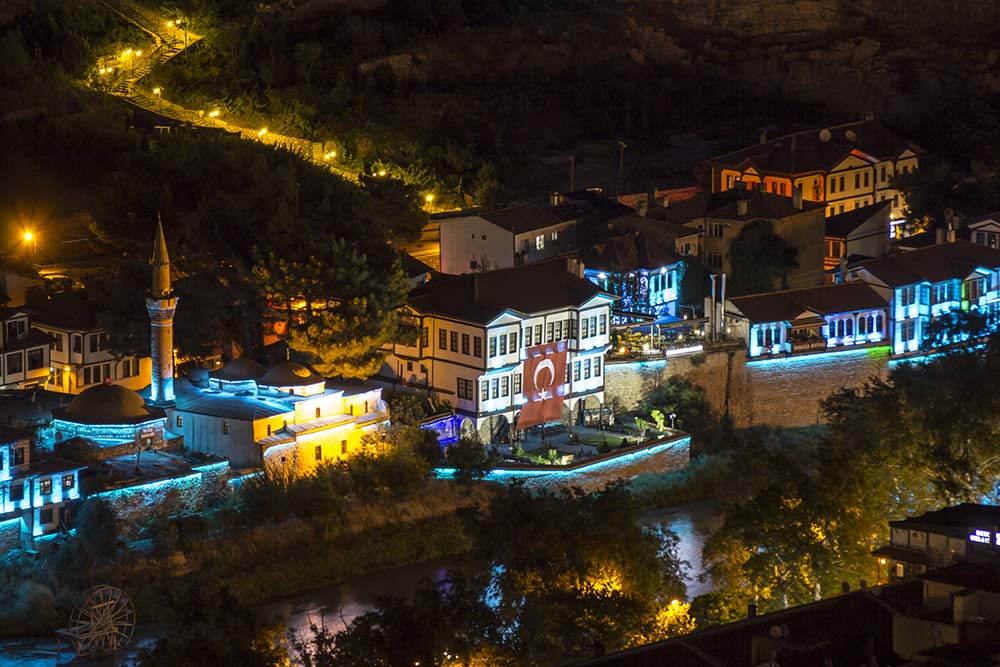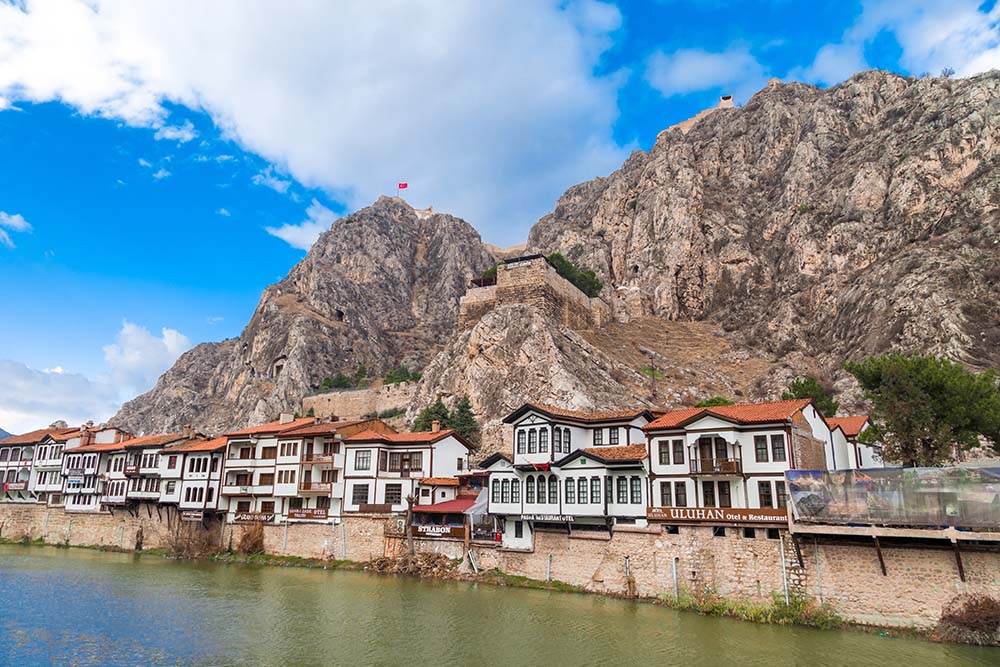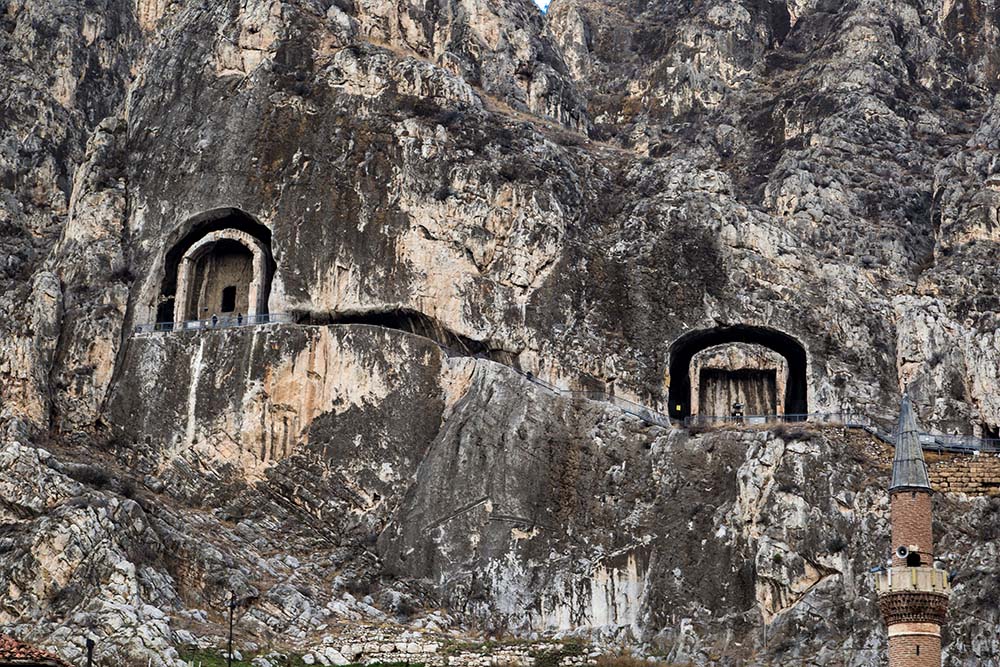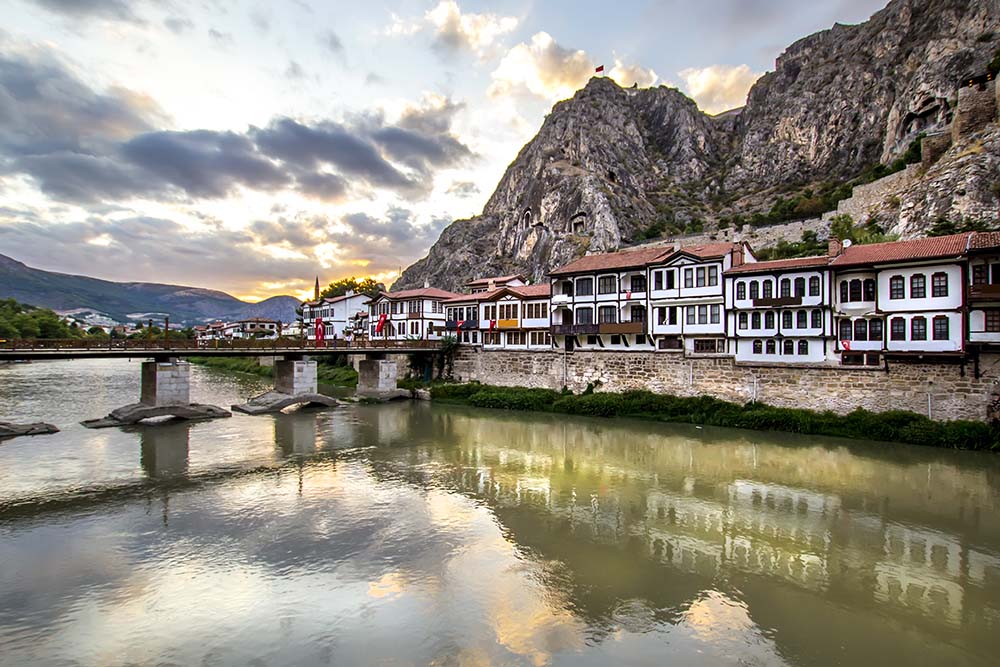Amasya is used as a residential settlement over 7000 years. It is located in the foothills of the Herşena Mountain and in the Yeşilırmak Valley. Throughout history, many artists and scientists lived in this city. In Amasya, education levels and orders of civilization were always held to a high level. Over time, the city had been ruled by the Persians, Macedonians, Romans, Byzantines, Arabs, Seljuks, and the Ottoman Empire, and the area is situated in the Black Sea Region.
Amasya is located among Çorum, Samsun, Yozgat, and Tokat. Although located in a valley, it has many mountainous areas, including Tavşan Mountain, Kocacık Mountains, Ferhat Mountain, and Kırklar Mountain. Thanks to Amasya’s lakes and dams, its soil is fertile. One of the most important lakes in this area is the Borabay Lake which holds plenty of fish species like pike, carp, and seabass.

Old Ottoman houses night light view by the Yesilirmak River in Amasya. Amasya is a city in northern Turkey.
Places to Visit
While nature’s water adds life to the plains, it also creates a unique culture centered on bringing water from the fountain, fishing, and daily tasks like cleaning and cooking. The design of houses and mansions reflect the culture, too. Many travelers first visit historical Amasya Castle which is located on Herşena Mountain. The Castle has 4 doors named Maydonos, Belkıs, Meydan, and Saray. There is a well called “Cilanbolu” inside the castle. There are also a dungeon and cisterns inside. An underground road that is believed to date to the 3rd century BC is also in the castle. This road goes to the Yeşilırmak River and to the King’s graves; it is extremely mysterious.

Close up view of old Ottoman houses by river.
Hazeranlar Mansion is an important building bearing the traces of the 19th century. The mansion was restored in 1976, and in 1984 it became a Home-Museum. You can see many ethnographic works there. In 1998, it was restored again, and then opened to visitors in 2001. When you visit the mansion, you can see the footprints of traditional Ottoman architecture. The mansion in fact resembles Safranbolu and Kastamonu houses, and it has three floors, including a basement, with two main entrances and a courtyard. The basement floor, called Hayat, was used as a barn in the past. Today, it is used as a Fine Arts Gallery. You should also visit the Alparslan Museum, the Şehzadeler Museum, and Sultan Bayezid Complex.

Detail view of king rock tombs in Amasya.
The King Rock Tombs, which date back to the Hellenistic period, belong to the Pontus Kings. They were made by carving into limestone rocks. If you want to visit here, you must cross the narrow streets of Hatuniye Mahallesi and proceed from the railway. There are carved stone roads and old stairs. Presumably there are 21 cemeteries here and the whole place is worth exploring. The largest tomb is 8 meters wide and 17 meters deep.
The Borabay Lake, Aynalı Cave, and Seven Swans Birds’ Sanctuary are among the natural sites you should see here. Seven Swans Birds’ Sanctuary is 817 hectares and it is the best place to get face to face with nature’s peaceful environment and to meet many animal species. Aynalı Cave is also one of the most tourist-friendly places in Amasya. With its legend and its glowing structure, the cave is the best representation of the King’s Tombs.
Cuisine
With its remarkable ecological structure, Amasya has a rich vegetation which contributes to its diverse cuisine. Among the regional specialties are çatal soup, akıtma (cızlak), ekmek aşı, kesme ibik soup, helle soup, bakla dolması, yuka tatlısı, zerdal, halbur dessert, Amasya çöreği, su böreği, pastırmalı pancar, hengel mantısı, and toyga soup and cılbır. You should definitely buy apples, homemade rosehip paste, and rice on your Amasya trip. Apart from that, shawls and scarves are famous here.
How to Get There
Amasya is located on main highways. It is easily reachable through bus network.

